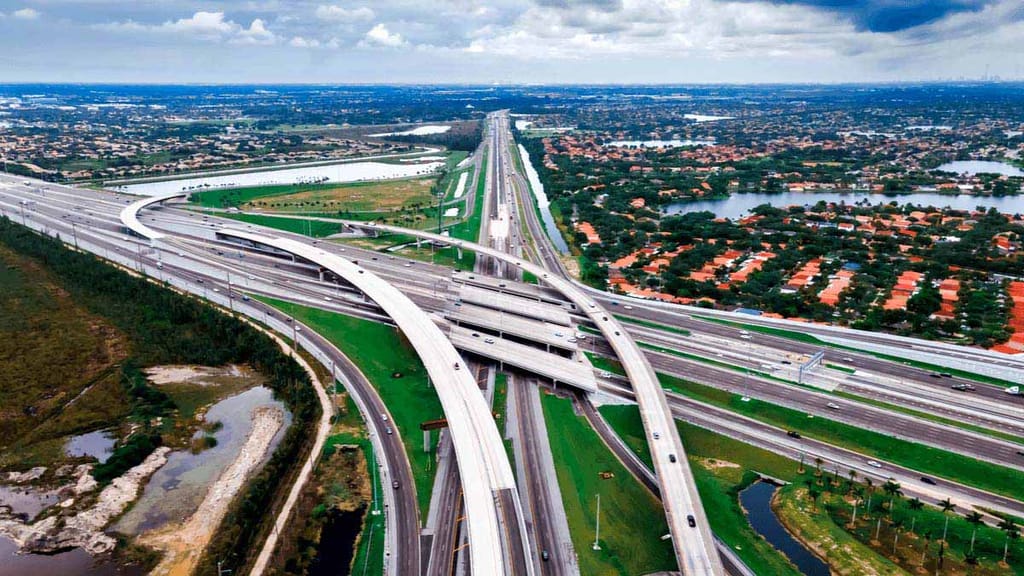
Roads, bridges, ports, rail transit, safe water, the electricity system, broadband internet, and other infrastructure projects are a part of President Joe Biden’s $1 trillion infrastructure bill, which he hopes to sign into law.
The plan is likely to reach nearly every part of the country. The president has compared it to the construction of the transcontinental railroad and the Interstate Highway System as a historic investment. The White House estimates that the investments will create nearly 2 million jobs per year on average over the next decade.
The bill passed the House on a 228-206 vote on Nov. 5, after weeks of intraparty discussions. The Liberal Democrats demanded that the law be attached to a bigger social spending bill to compel more moderate Democrats to vote for both.
After rare bipartisan negotiations, the Senate enacted the bill on a 69-30 vote in August, and the House upheld the agreement. Thirteen Republicans voted in favor of the plan, giving Democrats more than enough votes to overcome a few progressive defections.
A breakdown of Biden’s infrastructure bill expected to become law Monday:
Roads and bridges
The law would spend $110 billion to fix the country’s deteriorating roadways, bridges, and roads. According to the White House, America’s highways and major roads are in bad condition, totaling 173,000 miles (almost 280,000 kilometers) and 45,000 bridges. According to the Biden administration, nearly $40 billion for bridges is the single largest devoted bridge investment since the creation of the national highway system.
Public transit
The legislation’s $39 billion for public transit would expand transportation infrastructure, increase accessibility for individuals with disabilities, and provide funds for state and local governments to purchase zero-emission and low-emission buses. The Transportation Department estimates that almost 24,000 buses, 5,000 rail carriages, 200 stations, and thousands of miles of track and power systems need repair.
Railways
The plan would spend $66 billion to restore Amtrak’s Northeast Corridor (457 miles, 735 kilometers), as well as other routes, to lessen the rail service’s maintenance backlog, which has increased since Superstorm Sandy nine years ago. It’s less than Biden’s original request of $80 billion. But it would be the largest federal investment in passenger rail transportation since Amtrak was formed, i.e. 50 years ago. Biden famously rode Amtrak from Delaware to Washington during his stint in the Senate.
Electric vehicles
The measure would invest $7.5 billion in electric vehicle charging stations. The administration claims are crucial to boosting the usage of electric vehicles and reducing greenhouse gas emissions. It would also give $5 billion for the acquisition of electric and hybrid school buses. Hence, lowering dependency on diesel-fueled school buses.
Internet acess
The $65 billion allocated to the broadband connection under the bill would benefit rural areas, low-income families, and indigenous groups. The majority of the funds would distribute to states as grants.
Electric grid
The plan would spend $65 billion to upgrade the electricity grid’s stability and resiliency to prevent power outages. They have become more common in recent years. It would also encourage the development of carbon capture technology and more environmentally friendly electrical sources, such as clean hydrogen.
Airports
The bill would spend $25 billion to upgrade airport runways, gates, and taxiways, as well as terminals. It would also help to enhance the condition of aged air traffic control towers.
Water
$55 billion would be spent on water and wastewater infrastructure under the law. It has also $15 billion to replace lead pipes and $10 billion to address water contamination from poly-fluoroalkyl compounds. They were once used to make Teflon. They are now useful in firefighting foam, water-repellent clothes, and a variety of other products.
Paying for it
The five-year spending package will be paid for by tapping $210 billion in unspent COVID-19 relief aid. $53 billion in unemployment insurance aid some states have halted. Also, along with an array of smaller pots of money, like petroleum reserve sales and spectrum auctions for 5G services.
